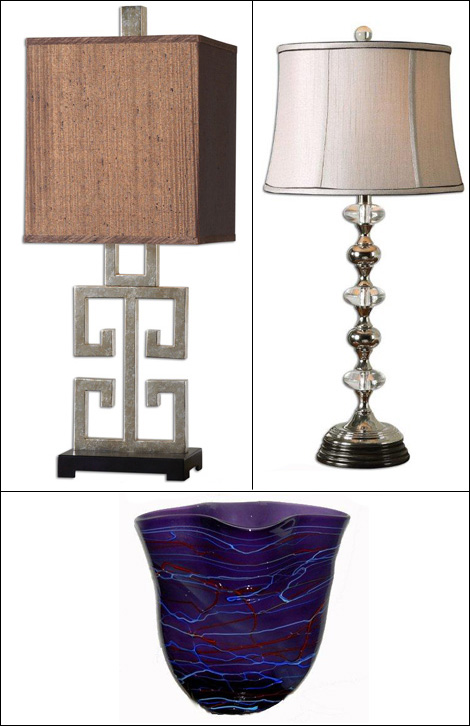A well-furnished room still needs to be finished well — as a new dress requires complementary accessories and make-up to ensure an outfit is dramatic and memorable.

“Lamps, rugs, plants, artwork, memorabilia, heirlooms and family pictures are all great accessories; without them — even if you have the best furniture, millwork and flooring — a potentially great room looks empty, as if no one lives in the home,” says Davinder Chawla, co-founder of La Maison Interiors,15450 N. Scottsdale Road.
“In much the same way, finishing an ensemble, even from the finest designers, requires just the right belt, shoes, earrings and jewelry,” adds Davinder, who opened the full-service design studio and furnishings/accessories showroom in September 2011with Alan K. Reinken and their staff of designers, sales and administrative associates.
Most importantly: Don’t overdo and keep accessories in scale: Clutter and overlayering is spatial TMI. Create a room to be enjoyed, not catalogued. Spaces should breathe, not suffocate.
Incorporating those pieces correctly and to scale will finish a room or your home for daily enjoyment and the delight of your guests. Home styles, homeowners’ tastes and budgets are different, so the selection of accessories will vary. “Fortunately,” she says, “you can do this inexpensively, you can do it in phases — but you have to do it right.”
Because of his/her expertise and objectivity, a La Maison designer can suggest accessories according to the layout of the room, its functionality, the color palette of the walls, furniture and flooring.
At La Maison’s showroom, you can see, and your designer will no doubt suggest a variety of exceptional pieces. These include lighting, wall art, mirrors, botanicals, art glass, candleholders, floor and table lamps and pendants.
“Before proceeding, even if your final accessorizing will be in phases, you and your designer should have an overview of the finished room in mind,” Davinder says. “Then, the rugs, lamps and artworks can be coordinated to ‘pop’ vignette areas, highlight individual furnishings and complete the room as an integrated whole.
Maintaining the scale of accessory items in relationship to the room is vital, she says. “The right lamp can change an entire room, or two nearby lamps correctly sized to the furnishings and ceiling height.” Similarly, delicate pendants can be grouped to tastefully fill space along a slope of a vaulted ceiling.
Savvy grouping, in fact, is a strategy that can create an exemplary room vignette.
For instance, placing a vase on a medium-height armoire in a high-ceilinged room draws attention to the inadequacy of the design response: The empty space is emptier because of the gesture. Instead, Davinder suggests implementing what she calls the “ikebana” look — an arrangement of two or three pieces that, together with the furniture, just doesn’t fill space; it energizes it.
Also: Don’t place a few small family pictures on an empty 12-foot-high wall behind a small table. “Enlarge the pictures and sepia-tone them, group them asymmetrically or arrange them individually in a large frame,” she suggests. The result is doubly attractive: People will react to them as artwork and approach closer to investigate and enjoy. “Artwork shouldn’t just be there; it should be eye level, face to face, dramatic and memorable.”
Your goal for accessorizing should be integration of individual room vignettes and, overall, the completeness, rationality and connectivity of the space.
As always, when you think home, think La Maison.
La Maison Interiors, www.lamaisonaz.com, 480.948.1144
